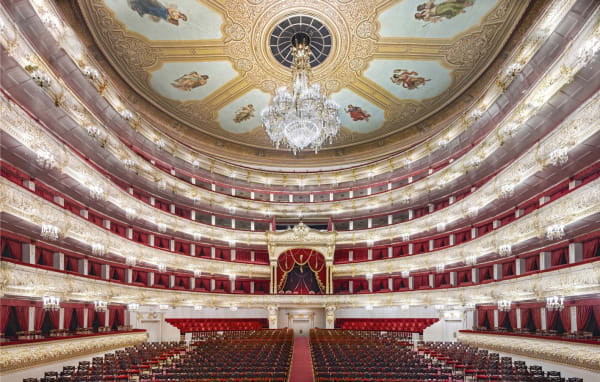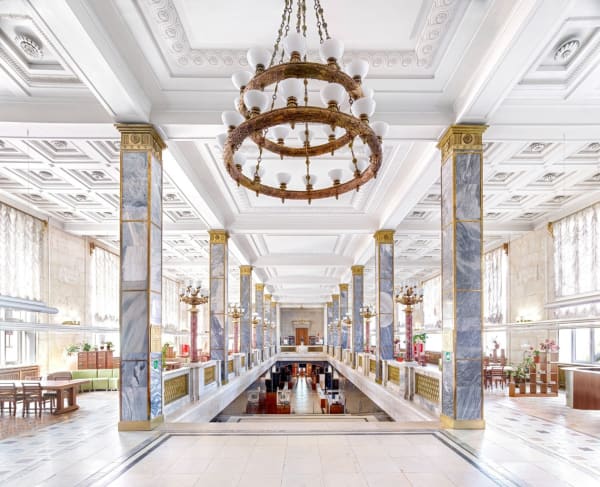Some 20 years ago, a friend and I got shut inside Hamburg’s Kunsthalle. It was winter, late afternoon and dark. It simply closed on us as we were walking around. The lights went out and silence dropped like a shutter. It was thrilling. Just like that, we had gone from being visitors to trespassers. Errant ghosts. And the space also changed: it became provocative.
Those same unoccupied Hamburg galleries were photographed in the 1990s by Candida Höfer, the German contemporary artist enamoured with bare-but-beautiful chamber pieces. For half a century, Höfer has travelled the world creating inscrutable images of empty museums, libraries, cathedrals, grand cafés and theatres — works that evoke what I felt in Hamburg, something midway between a treat and a transgression.
Höfer delivers geometry in a modest palette, occasionally punctuated with a blood-red chair or a yellow wall — subtle abstractions of spaces untroubled by figures. In terms of composition, these pieces of statement architecture provide a single-minded focus on structural form. Doors and windows provide frames within frames; staircases deliver vertiginous drops; corridors and colonnades lead the eye. Ego doesn’t come into the equation.
In a new show at the Museum of Photography in Berlin, Höfer’s large-format works are presented “in dialogue” with architectural photographs from the collection of the city’s art library. The exhibition ponders what rooms are when they are bereft of guests. Are they cautionary tales or invitations? Places of melancholia or expectation? Are they sinister, sedate or changeable? Or, perhaps, are they all of these things?




